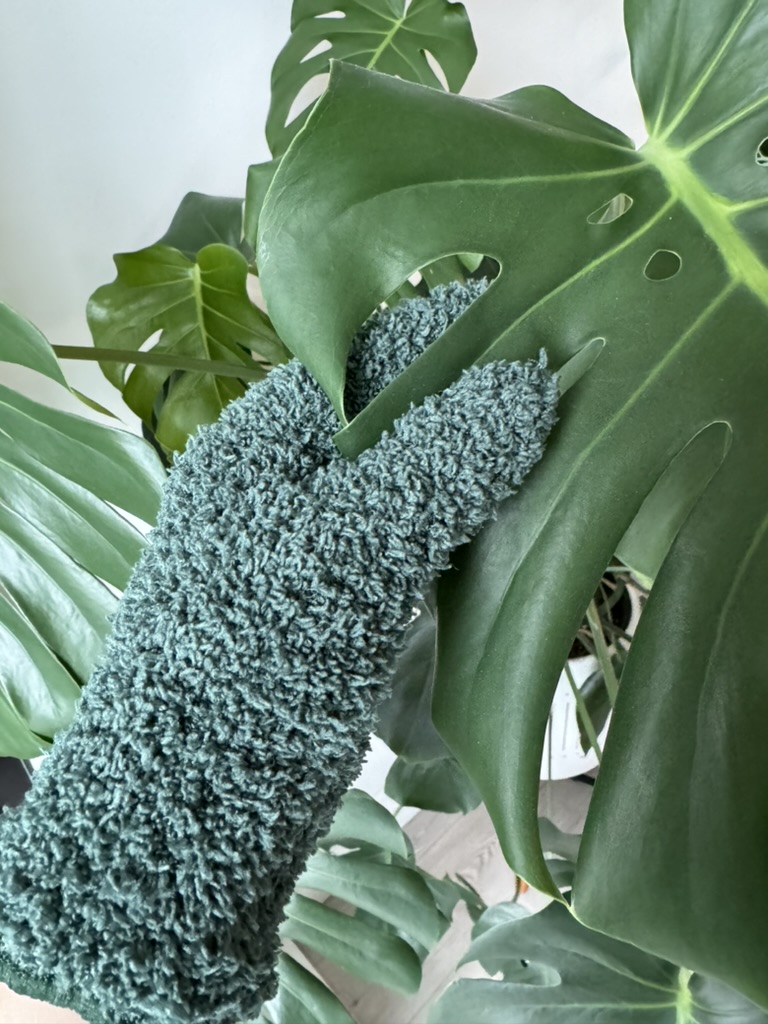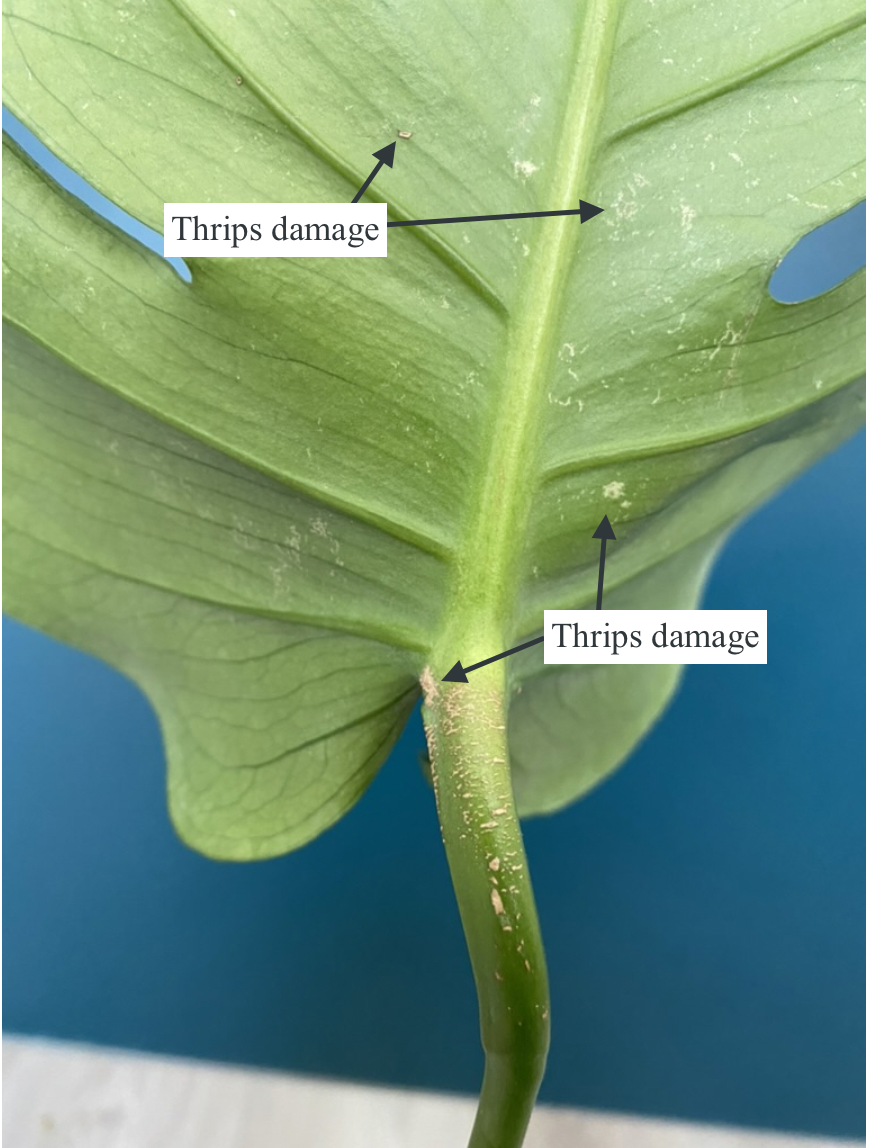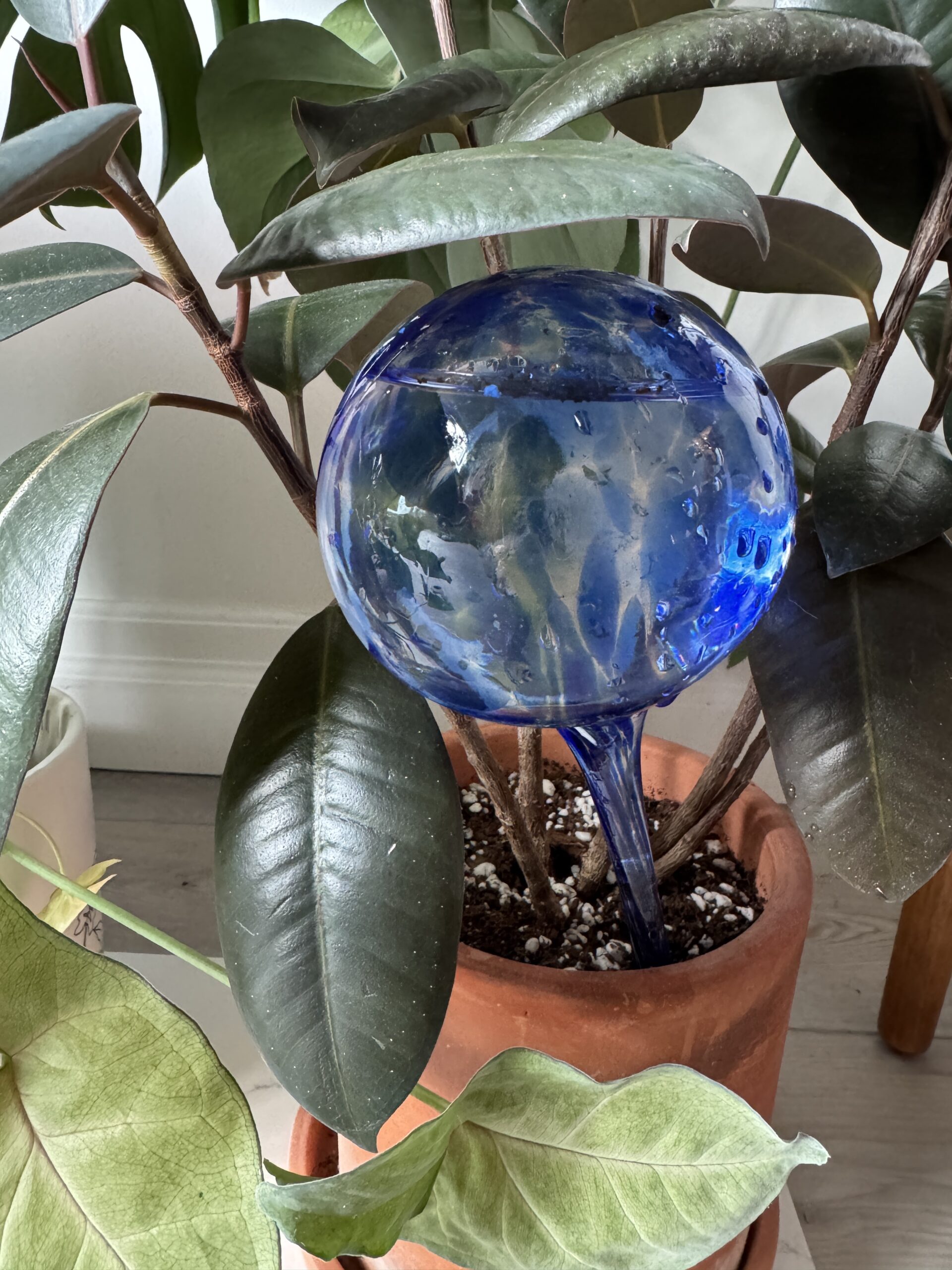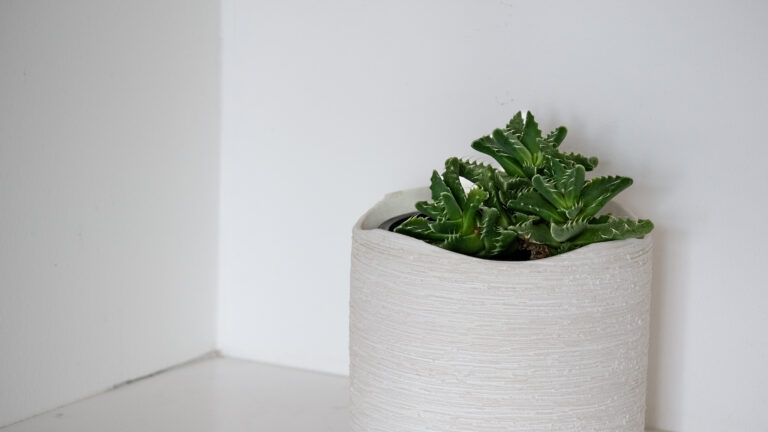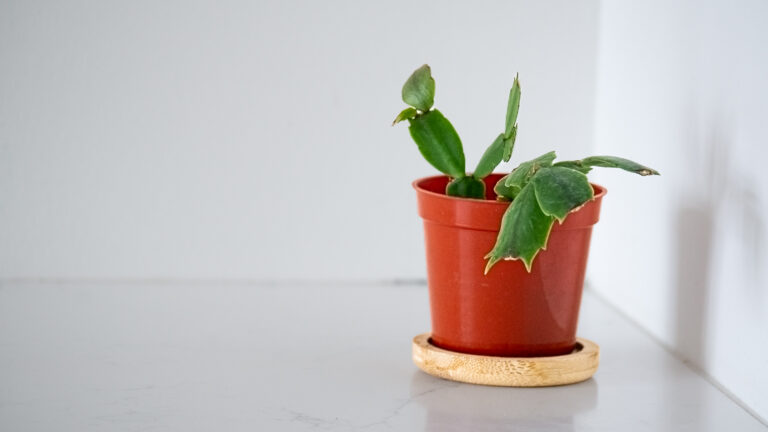Coffee Plant or Coffea Arabica is a member of the Rubiaceae family. It is native to Africa.
Coffea Arabica is referred to as the Coffee Plant because it is the plant responsible for the majority of the world’s coffee production. In the 19th century, people started collecting this plant as a houseplant.
There are around 13,500 species of the Rubiaceae family.
Coffee Plant Appearance & Growth Habit
The Coffee Plant looks somewhat like a little tree with shiny oval, dark green leaves. The leaves are arranged atop the woody branch in a busy, compact way.
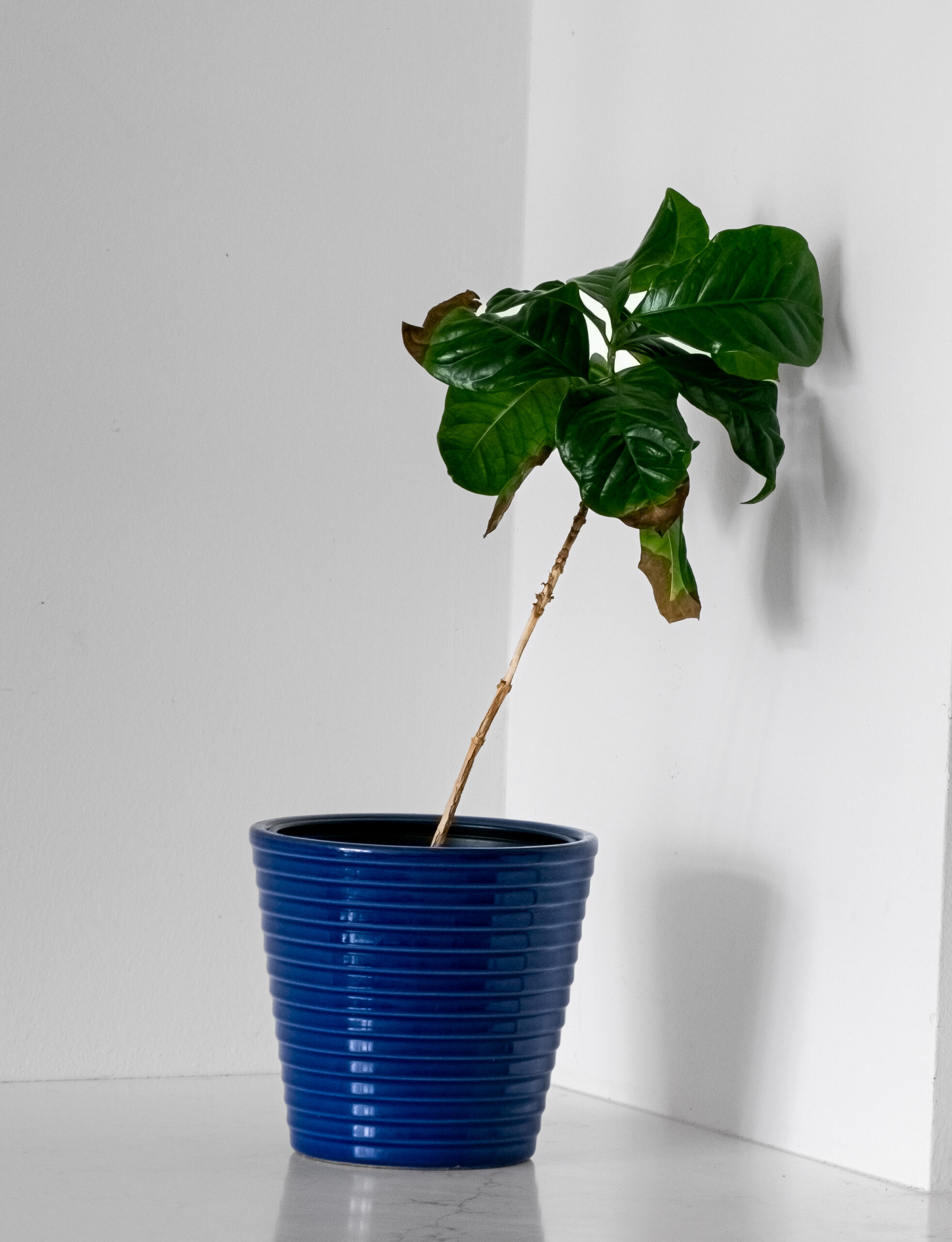
Light Requirements for Coffee Plant Indoors
Coffee Plant thrives in indirect, medium-bright light. They prefer morning sun so east-facing windows are best.
While Coffee Plant grows in dappled sunny environments in the wild, it grows best when the light is blocked or filtered by larger items like rocks or big plants.
Ideal Temperature & Humidity for Coffee Plant Indoors
Coffee Plant prefers a temperature between 15-24 degrees celsius, but can tolerate 10 degrees celsius during the winter. They also prefer higher humidity. Since they come from rainforest regions, they prefer moist air, but do well in household humidity levels (50-60%).
I keep my Coffee Plant closer to the humidifier (I use the Levoit Hybrid Ultrasonic Humidifier (LV600HH)).
I use my humidifier to ensure the humidity levels in my apartment stays between 40% and 60%. Since I live in Canada and the winters can be very dry, and the humidity can drop below 30% humidity, so its helpful to set the humidity at about 45% or 50% in this season to keep all of my plants helpful.
Growth Rate & Fertilizer Needs for Coffee Plant Indoors
On average, Coffee Plant can grow up to 4 to 6 feet.
New foliage on the Coffee Plant emerges from the top of the leaves, but they grow off of branches. They look like little leaf buds. The foliage grows in brighter green and darkens with age.
To encourage new growth, fertilize your Coffee Plant with a balanced fertilizer every 4–6 weeks during spring and summer months.
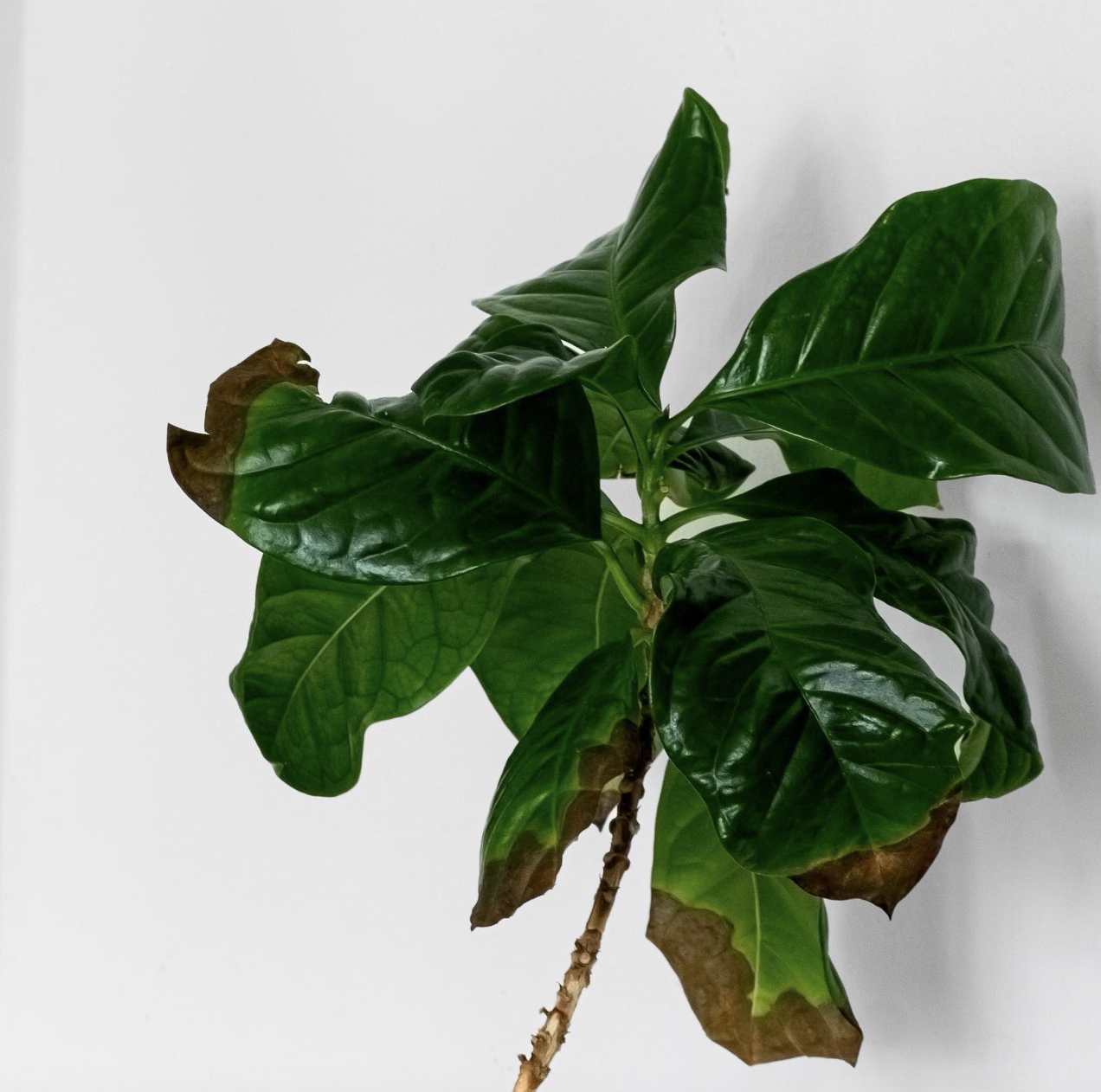
When & How to Repot Coffee Plant Indoors
When to Repot Coffee Plant
Repot your Coffee Plant every 2–3 years, or when you notice roots growing out or circling the bottom of the pot, slowed growth, soil that no longer drains well or dries up too quickly. The best time to repot is in spring (just before the active growing season).
How to Repot Coffee Plant
Choose a pot one size larger (2″) with a drainage hole. Cover the bottom of the new pot with a fresh, rich potting mix. Gently remove the plant from its current pot, loosen the root ball, and trim away any dead or rotted roots. Place the plant in the new pot, fill around it with additional soil as required. Pat the soil around the base of the plant, and water thoroughly. Place the plant back in your typical place in your home.
For everything you may need while repotting your Coffee Plant, check-out my Repotting Essentials guide.
Coffee Plant Blooming: What to Expect Indoors
This plant does flower, but it is more common outdoors.
When they do flower, the blooms are small, and fragrant white flowers. Blooms typically appear in spring or early summer, after years of growth, and optimal conditions.
The blooms may be followed by small green berries that mature into red coffee cherries. However, indoor plants may bloom less frequently than outdoor ones, and fruiting is rare without optimal light and humidity.

How to Propagate Coffee Plant (Seeds & Cuttings)
The easiest way to start a new Coffee Plant is by seed propagation.
- Seed Propagation: You can grow coffee plants from by extracting the seeds from ripe coffee cherries. This method will take years though as you have to wait for your plant to develop fruit which can take years.
- Stem Cuttings: You can take cuttings from the stem tips (ensuring they have nodes), and plant them in soil. This method isn’t as easy as the seed propagation, but it is quicker than waiting 7 years for fruit.
- Air Layering: This technique encourages roots to grow on a branch while still attached to the parent plant. Once roots have developed, separate the rooted section and pot it in soil.
- Division: Sometimes multiple plants will be potted together. In this situations, you can remove the entire plant from the pot, gently separate the plants, and plant the individual plants into new pots. Make sure you water the newly divided plants and place them in a bright location with indirect light.
Patience is key with propagation. Give your new plant time to settle into its environment. Once you see new growth, you know your plant is well established.
Watering Coffee Plant: How & When Indoors
The Coffee Plant likes to be watered when half dry. To determine if your plant needs water, you can stick your finger in the soil (1 to 2 inches) and if it is dry, its ready for water!
If you don’t want to get your hands dirty, you can try a moisture meter (I personally have not used one, but I know quite a few people who do, and this one is really highly rated on Amazon).
This plant typically needs to be watered every week (depending on your environment and time of year).
I typically bottom water this plant through the drainage hole of the pot on a tray. It’s the easiest way to know if your plant is thirsty or not. Overwatering can lead to fungus gnats, root rot, or the death of your plant.
You can top water, but it’s best to do so in a pot with drainage until water is flowing out of the hole. If your pot doesn’t have drainage, you might accidentally drown your plant or make some fungus gnats very happy.
You should top water from time to time to make sure any built up minerals can wash through the plant. The water should drip out of the bottom of your drainage hole.
If you are going to be away for an extended period of time, and are worried about watering your Coffee Plant, check-out my guide on 3 ways to keep your plants alive while on vacation.
Common Pests & Problems in Coffee Plant Indoors
Coffee Plant can face the following pests and problems.
Pests of Coffee Plants
Coffee Leaf Miner
This is a pest specific to the Coffee Plant. The larvae tunnel into the leaves causing damage and leaving characteristic trails. You can start to treat affected plants by removing any impacted leaves. Pesticides should be used as a last resort.
Mealy Bugs
these look like little white cotton balls on the plant. You can remove these with your fingers if you catch them early enough, but I would use a cotton swab with a drop of Isopropyl alcohol and try to scrape them off the stem.
Scale
I’ve never personally had scale (knock on wood) and I am very thankful. Scale are small, brownish, round or oval insects that attach themselves to the leaves or stems of the plant. They are hard to notice as they appear like a growth or bump on the plant. Scale can cause yellowing, wilting, and weakened growth. Removing scale from a plant is tedious, like with mealybugs. You can remove scale by manually removing them with a cotton swab with rubbing alcohol, using insecticidal soap or neem oil.
Aphids
Aphids are small, insects that cluster under leaves and stems. They can appear white, brown, black, gray, light green or yellow. If you see distortion, wilting or yellowing leaves, this can be a sign of aphids. You should be able to spray them off with a strong stream of water or using insecticidal soap. Aphids can cause honeydew to produce, which then can attract other insects like ants.
Spider Mites
If spider mites have taken to your plant, spray them with a mixture of neem oil, dish soap and water (or you can buy an insecticidal soap). I repeat this about once or twice a week (depending on the severity of infestation) for about a month. It’s also good to do this preventatively once a month or so. You will know you have spider mites if you see webbing and leaf damage. Learn how to eradicate Spider Mites.
Thrips
these are little, dark bugs that look like dirt. They suck the life out of the leaves, and lay eggs within the tissue of the leaf. As they age, they can grow wings and infect other plants. I spray the plant with a mixture of neem oil, dish soap and water. I repeat this every few days to try and get both the pest and the eggs. Sometimes I just chop the affected leaf since they are hard to eradicate. Complete guide on how to get rid of thrips.
Fungus Gnats
Spray the plant with a mixture of neem oil, dish soap and water. I also let the soil dry out and add dryer sheets on top of the soil so the gnats can’t sense the moisture on the soil.
Whiteflies
These are tiny, white insects that feed on sap and can transmit disease. To treat whiteflies you can prune the affected leaves to reduce the population; use a strong stream of water to dislodge whiteflies; use yellow sticky traps; and/or insecticidal soap (a mixture of neem oil, dish soap and water (or you can buy an insecticidal soap).
Other Common Problems of Coffee Plants
- Drooping Leaves: Your plant is likely thirsty. Just give it a little water and it should be as good as new.
- Yellowing Leaves: If you have a new leaf coming in, your plant is likely fine. Plants pull energy from older leaves to support new growth. But it can also indicate over- or under- watering or lighting issues. This can also be a sign of nutrient deficiencies.
- Overwatering: Root rot happens from overwatering your plant with insufficient drainage. You can improve the drainage of your plant by ensuring your plant is potted in a planter with a drainage hole and using a well draining soil (something with a decent amount of perlite). You can also end up with fungus gnats or fungal disease from overwatering.
- Underwatering: Signs of underwatering include leaves becoming shrivelled, discoloured or dry.
- Brown, Crispy Leaves or Leaf Drop: This is caused by low humidity. It’s best to use a humidifier to avoid this issue.
- Temperature Fluctuations: This plant prefers stable temperatures and is sensitive to cold drafts. Damage from cold temperatures can lead to vulnerability to disease, visible discolouration, growth stagnation or death. You can prevent this by making sure your plant is not exposed to environments below the recommended temperatures.
- Improper Lighting: Incorrect lighting can lead to a leggy Coffee Plant. This happens if the plant doesn’t get enough sun. The stems will grow really long trying to reach the sun. However, too much sun can lead to scorched leaves.
Coffee Plant Toxicity
The Coffee Plant is moderately toxic to pets if ingested. For humans, if they ingest large quantities of the leaves, unripe berries or beans, they may end up with an upset stomach.
If beans are produced, the caffeine in them can be harmful to pets and small children. Keep the plant out of reach and supervise pets and kids around it.
Coffee Plant Quick Care Guide
| Scientific Name | Coffee Arabica |
| Nickname | Coffee Plant |
| Origins | Africa |
| Light | Bright, indirect, medium-light, east-facing window |
| Temperature | 15-24 degrees celsius (preferred), As low as 10 degrees celsius can be tolerate during the winter |
| Humidity | Average – high humidity at 50-60% |
| Height | Up to 6 feet |
| Blooms | Yes |
| Propagate | Seed, Stem Cuttings, Air Layering, Division |
| Water Frequency | When half-dry (likely once a week) |
| Pests | Coffee Leaf miner, Mealy Bugs, Aphids, Scale, Spider Mites, Thrips, Fungus Gnats, Whiteflies |
| Common Problems | Overwatering (root rot), underwatering, fungal disease (not common), temperature fluctuations, nutrient deficiencies, brown crispy leaves, leaf drop, improper lighting |
| Toxicity | Moderate (not safe when ingested for pets) |
References
Below is a list of external sources I consulted while writing this post. This post is a mixture of my own experiences, and the external sources listed below:
Jomo Studio (my fave plant store)

